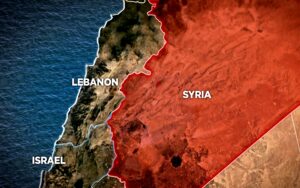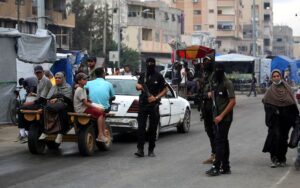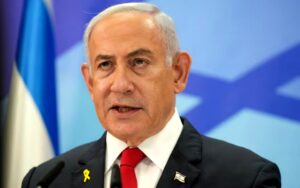What are the most important Iranian drones and their technical features?

Iran became interested in creating drones in the 1980s, during the Iran-Iraq war (1980-1988).
The first batch of Iranian drones bore the name “Ababeel”, which was simple to manufacture and known as “flying munitions”, and it was successfully used on the fronts in the war alongside other unmanned aircraft that were developed.
After the war period, Tehran decided to focus on creating and developing unmanned aerial systems.
As part of this industry, many scientific and technical centers were established, in addition to factories to repair and manufacture them, in addition to the participation of other companies in the manufacture of some components, which are supervised in one way or another by the Iranian Revolutionary Guard.
Iran has directed mass production of unmanned aircraft that can compensate for the insufficient potential of the Iranian Air Force, including due to the impossibility of building full-fledged combat aircraft.
And it has achieved development in this field and in all major categories, from light tactical reconnaissance aircraft to reconnaissance systems, aircraft with guided bombs, short-range missiles and “Kamikaze” aircraft.
Iran’s progress in this field is due to technical and scientific cooperation with China in the use of special production techniques and materials that were officially or unofficially obtained, in addition to obtaining real samples of American and Israeli drones for the purpose of studying and cloning models of them.
So far, about 40 models of various drones have been produced in Iran, the most important of which are Ababeel, Kaman, Kayan and Muhajir.
According to experts, the most efficient and powerful Iranian drones are the Shahed, Muhajir, Kaman and Kayan models.

Shahed 126
It is considered one of the most powerful unmanned aircraft in the Iranian forces, and is close in appearance to the American RQ-1 / MQ-1 “Predator”, and its first launch was in the spring of 2012.
Technical features:
Purpose: reconnaissance and direct air strikes on targets from the air (since 2016).
Flight time and distance: 24 hours, and it can cover a distance of 1700 km.
Combat power: Carries 4 “Sadid-345” missiles, with a payload of 400 kg.
Featuring a full-featured piston with a wingspan of 16 meters, the aircraft is a copy of the Israeli Hermes 450 drone that crashed in Iran.
According to other sources, this is a copy of the American drone “Predator” and the Chinese aircraft “Wing Loong II”.

Shahed 136
The most effective Iranian drone of the “Kamikaze” model, which was first introduced in 2020.
Technical features:
Purpose: to carry out air strikes on targets.
Flight duration and mileage: It flies between 10 to 12 hours and can cover a distance of 2000 km (according to what was announced by the manufacturer), but according to American experts, its real range is several hundred kilometers, and its speed is about 180 km / h.
Combat power: 40-50 kilograms of explosive.

Shahed 149 Gaza
The first test flight of the aircraft in 2022.
Technical features:
Purpose: reconnaissance and carry out air strikes on targets.
Flight time and distance: It can fly up to 35 hours and travel a distance of 2000 km, and its speed is about 350 km / h.
Combat power: 13 bombs and 500 km of electronic equipment.
It has a wingspan of 21 meters and is powered by a turbocharged engine.

Shahed 171 Simorgh
Technical features:
Purpose: reconnaissance and the implementation of air strikes.
Flight time and distance: It can fly for 10 hours and travel a distance of up to 2000 km at a speed of about 460 km / h.
Payload: unknown.
Combat power: electronic equipment and live ammunition.
The aircraft features a flying wing and has modern stealth technology, uses a jet engine, and is a full-size version of the American aircraft RQ-170 captured by Iran in 2011.
It is one of two Iranian drones based on the “RQ-170”, along with the Shahed 191 Sayigh-2 (a smaller version RQ-170), which is often confused with them.
According to experts, the efficiency and capabilities of the Shahed 171 Simorgh are significantly lower than those of the RQ-170.

Shahed 191 Sayigh-2
This model was actively used in Syria, which is a copy of the American RQ-170, with lower efficiency, and was tested in October 2016.
Technical features:
Purpose: reconnaissance, surveillance and implementation of air strikes, and has the ability to carry precision-guided munitions.
Flight range and mileage: It can fly for 4.5 hours, covering a distance of 450 km.
Combat power: It carries two Sadid-1 missiles, and a payload of 50 kilograms.

Kaman 22
Iran’s first wide-body (UAV) drone, which can carry any type of ammunition, and was tested on February 24, 2021.
Technical features:
Purpose: reconnaissance and the implementation of air strikes.
Flight time and distance: You can fly for 24 hours and cover a distance of 3,000 km.
Combat power: 300 kg of explosives and special equipment.
It is built using American technology, similar to the American MQ-1 Predator, using features from the more advanced MQ-9 Reaper.
In addition, it is similar to the Chinese “CH-5” drone.

Arash 2
A heavy drone is designed to destroy critical infrastructure facilities and radars from air defense systems covering them over a long range of 1,000 to 2,000 km.
The main purpose of drones is to deliver “strategic strikes” on city infrastructure.
Technical features:
Purpose: to carry out air strikes on targets.
Flight duration and distance covered: There is no information about the flight duration, and it can cover a distance of 1000 to 2000 km.
Combat power: It can carry 260 kg of explosives.
The Arash 2 is equipped with a jet engine, and is equipped with a piston engine.

Mohajer 6 Quds
This drone is characterized by its rectangular shape and the presence of 3 fans, and it was tested in the first half of 2017.
Technical features:
Purpose: reconnaissance and the implementation of air strikes.
Flight time and distance: You can fly for 12 hours and cover a distance of 200 km.
Combat power: It carries 4 precision-guided munitions, weighing 100 kg, including “al Mas” missiles or “Qa’im” bombs.
In recent decades, Iran has made great progress in the field of unmanned aircraft, as it manufactures, develops and produces its aircraft using various methods.








